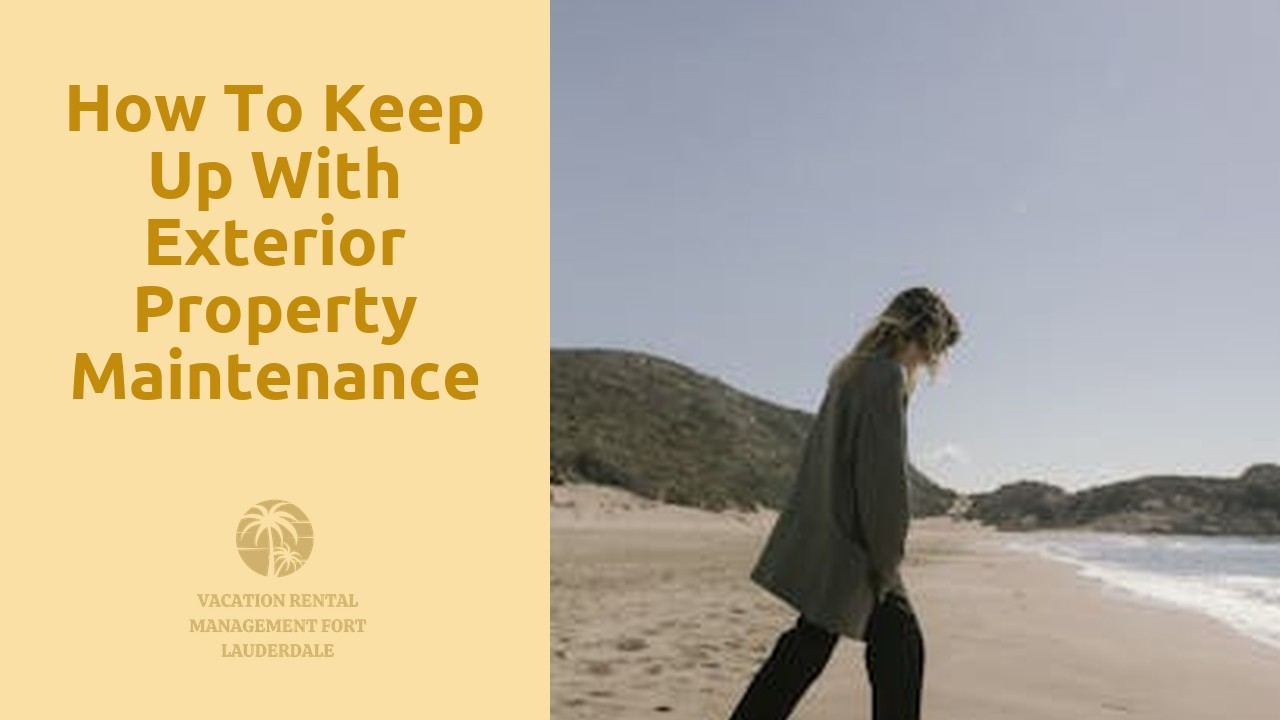
How to Keep Up with Exterior Property Maintenance
Table Of Contents
Best Practices for Lawn and Garden Care
For a well-maintained outdoor space, lawn and garden care are essential aspects to focus on. Regular mowing, watering, and fertilizing your lawn will keep it healthy and green throughout the seasons. Make sure to trim shrubs, remove weeds, and keep your flower beds tidy to enhance the overall appearance of your property. Additionally, investing in a good quality lawn mower and gardening tools will make your maintenance tasks much more efficient and enjoyable.
When it comes to garden care, pay attention to the specific needs of your plants in terms of sunlight, water, and soil type. Regularly inspect your garden for pests and diseases, and take prompt action to address any issues. Consider planting native species that are well-adapted to your region's climate and require less maintenance. Finally, remember to mulch your garden beds to retain moisture, suppress weeds, and improve soil health. By following these best practices for lawn and garden care, you can create a beautiful and welcoming outdoor space to enjoy year-round.
Tips for Maintaining a Healthy and Vibrant Outdoor Space
To maintain a healthy and vibrant outdoor space, it is essential to establish a regular maintenance routine. Begin by mowing the lawn regularly to keep it looking neat and well-kept. Overgrown grass not only looks unkempt but can also harbor pests and lead to an unhealthy lawn. Additionally, make sure to trim hedges, bushes, and trees to promote healthy growth and maintain a neat appearance throughout your property.
Another important aspect of outdoor space maintenance is proper watering and fertilizing. Be sure to water your lawn and plants deeply and infrequently to encourage deep root growth and resilience during dry spells. Consider investing in a sprinkler system or drip irrigation to ensure that your plants receive adequate moisture. Furthermore, apply a balanced fertilizer to replenish essential nutrients in the soil and promote lush, healthy growth.
Dealing with WeatherRelated Damage
Weather-related damage can take a toll on the exterior of your property, leaving behind a trail of destruction that needs immediate attention. From heavy rains causing soil erosion to strong winds damaging trees and structures, it's essential to address these issues promptly to prevent further harm. After a severe storm or harsh weather conditions, start by conducting a thorough inspection of your outdoor space to assess the extent of the damage.
Once you've identified areas that need repair or maintenance, prioritize safety by addressing any hazards such as fallen branches or unstable structures. Secure loose items, clear debris, and trim damaged foliage to prevent any accidents or additional damage. Depending on the severity of the weather-related damage, you may need to seek professional assistance for tasks that require specialized equipment or expertise to ensure the restoration of your property's exterior.
Steps to Take After Severe Storms or Harsh Conditions
After severe storms or harsh conditions have passed, it's crucial to assess the damage to your property promptly. Start by checking for any fallen branches or debris that may pose safety hazards. Clearing these obstructions should be a top priority to ensure the safety of your outdoor space.
Next, inspect your plants, trees, and any structures for any signs of damage. Look for broken branches, uprooted plants, or any structural issues that need immediate attention. While attending to visible damage, don't forget to examine your lawn for any drainage issues that may have arisen due to the storm. Proper assessment and prompt action can help mitigate further damage and restore your outdoor space to its former vibrancy.
Sustainable Practices for EcoFriendly Maintenance
Sustainable practices for eco-friendly maintenance are essential for reducing our environmental footprint while caring for our outdoor spaces. One way to achieve this is by using organic fertilizers and pesticides that are free from harmful chemicals. These natural alternatives not only support a healthier ecosystem but also promote long-term soil fertility and plant growth.
Another eco-friendly practice is to implement water-saving techniques such as installing rain barrels to collect rainwater for irrigation purposes. This not only conserves water but also reduces the reliance on traditional water sources. Additionally, opting for drought-resistant plants and native species can help create a more sustainable landscape that requires minimal water and maintenance. By incorporating these practices into our property maintenance routines, we can contribute to a greener and more environmentally friendly future.
Ways to Minimize Environmental Impact While Caring for Your Property
In an era where environmental consciousness is crucial, integrating sustainable practices into your property maintenance routine is essential. One effective way to minimize your environmental impact is to opt for natural or organic alternatives to chemical pesticides and fertilizers. These eco-friendly options not only promote a healthier ecosystem but also safeguard the well-being of your family and pets by reducing exposure to harmful toxins.
Furthermore, consider implementing water conservation techniques such as installing a rain barrel to collect rainwater for irrigation purposes. This not only reduces your reliance on municipal water sources but also helps prevent runoff and erosion. Additionally, choosing drought-resistant plants native to your region can significantly decrease water usage while enhancing the aesthetic appeal of your outdoor space. By making these conscious choices, you can actively contribute to a greener environment while maintaining a beautiful property.
Related Links
What Are the Best Cleaning and Housekeeping ServicesHow to Maintain Landscaping and Exterior of a Vacation Rental Property
Top 10 Landscaping and Exterior Maintenance Tips for Vacation Rental Properties
Review: Landscaping and Exterior Maintenance Services for Vacation Rental Properties
A Historical Overview of Landscaping and Exterior Maintenance for Vacation Rental Properties
What Are the Best Practices for Landscaping and Exterior Maintenance?
What to Consider When Maintaining Landscaping for Vacation Rental Properties
Why Exterior Property Maintenance Should Not Be Overlooked
Why Landscaping and Exterior Maintenance is Essential for Vacation Rental Properties